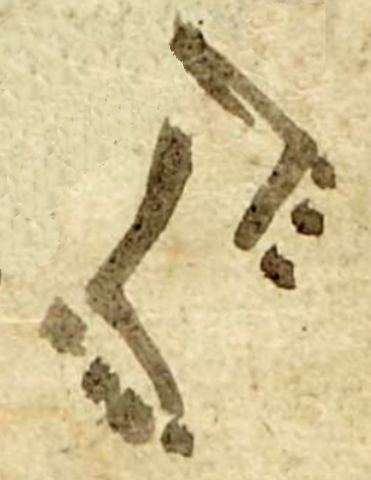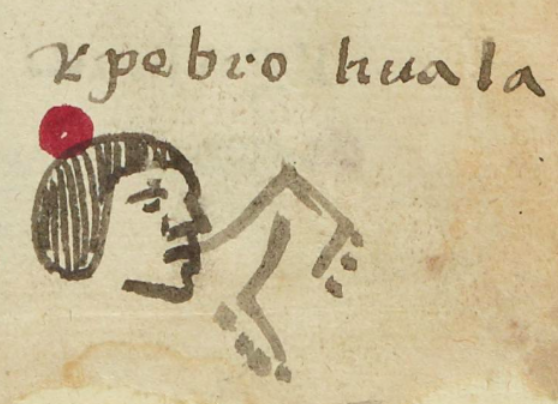Huallauh (MH617r)
This black-line drawing of the simplex glyph for the personal name Huallauh (perhaps "He Has Come" or "He Has Been Brought," attested here as a man's name) shows two alternating, descending footprints.
Stephanie Wood
Descending footprints convey come, and rising footsteps convey go. Perhaps this name, originally referring to a baby, had the sense of "He Has Been Born," or "Delivered," "Brought To Us." James Lockhart includes "to be brought" as part of his translation of huallauh. Granted, the spelling "huallauh," is a far cry from "Huala," which is what the gloss presents, but the footprints would support the analysis, given that huallauh also means "to come."
Footprint glyphs have a wide range of translations. In this collection, so far, we can attest to yauh, xo, pano, -pan, paina, temo, nemi, quetza, otli, iyaquic hualiloti, huallauh, tetepotztoca, totoco, -tihui, and the vowel "o." Other research (Herrera et al, 2005, 64) points to additional terms, including: choloa, tlaloa, totoyoa, eco, aci, quiza, maxalihui, centlacxitl, and xocpalli.
Stephanie Wood
1560
Jeff Haskett-Wood
venir, hacia acá, caminar, pies, huellas, icximachiyotl, xocpalli, icxipamitl, frase entera, nombres de hombres

huallauh, to come this way, https://nahuatl.wired-humanities.org/content/huallauh
Ha Venido
Stephanie Wood
Matrícula de Huexotzinco, folio 617r, World Digital Library, https://www.loc.gov/resource/gdcwdl.wdl_15282/?sp=316&st=image.
This manuscript is hosted by the Library of Congress and the World Digital Library; used here with the Creative Commons, “Attribution-NonCommercial-ShareAlike 3.0 License” (CC-BY-NC-SAq 3.0).




